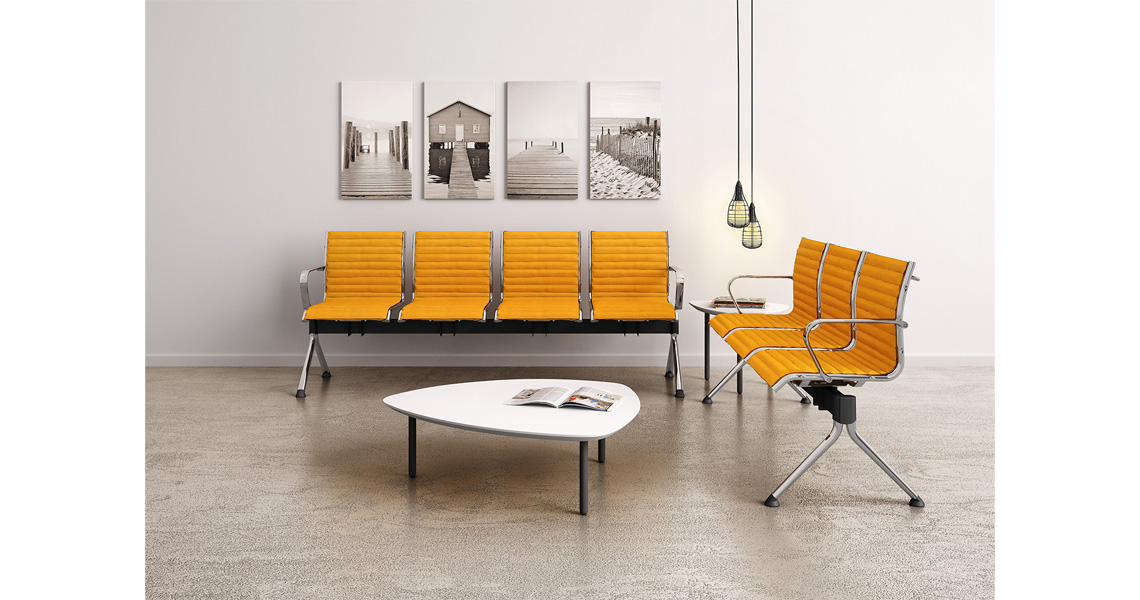Interior design plays a crucial role in shaping the ambiance, functionality, and overall experience of different spaces within a building. Waiting rooms and offices are two distinct areas that require thoughtful consideration when selecting furniture, particularly chairs. Waiting room chairs and office chairs serve different purposes and have unique design considerations to enhance comfort, functionality, and aesthetics. In this guide, we’ll explore the role of waiting room chairs versus office chairs in interior design, highlighting their differences and importance in creating inviting and productive environments.
1. Functionality
Waiting Room Chairs: Waiting room chairs are designed to provide comfortable seating for visitors and guests who may need to wait for appointments, meetings, or services. These chairs should be durable, easy to clean, and accommodating for users of various shapes and sizes. Armrests and a supportive backrest are often incorporated for added comfort during longer waiting periods.
Office Chairs: Office chairs, on the other hand, are tailored to support employees during their daily tasks and activities. Ergonomic features such as adjustable seat height, lumbar support, and armrests are essential for promoting proper posture and reducing the risk of musculoskeletal discomfort. Swivel and tilt mechanisms allow users to customize their seating position for maximum comfort and productivity throughout the workday.
2. Comfort
Waiting Room Chairs: Comfort is paramount when selecting waiting room chairs to ensure a positive experience for visitors and guests. Padded seats and backrests, along with ample seating space, contribute to a comfortable and inviting environment. Upholstery options should be chosen with consideration for durability, ease of cleaning, and visual appeal.
Office Chairs: Comfort is equally important for office chairs to support employees during long hours of work. High-quality padding, breathable upholstery, and adjustable features contribute to comfort and support for prolonged sitting. Ergonomic design elements such as contoured seat cushions and adjustable lumbar support enhance comfort and reduce the risk of fatigue and discomfort.
3. Aesthetics
Waiting Room Chairs: Waiting room chairs play a significant role in creating a welcoming and professional atmosphere for visitors and guests. The design, color, and materials of waiting room chairs should align with the overall interior design scheme of the space. Upholstery options range from fabric to leather, with choices made based on durability, maintenance requirements, and aesthetic preferences.
Office Chairs: Office chairs contribute to the aesthetic appeal of the workspace while also reflecting the company’s brand identity and culture. Modern office chairs come in a variety of styles, from sleek and minimalist to classic and executive. The choice of upholstery, frame finish, and design details should complement the overall interior design of the office space while providing a comfortable and functional seating solution for employees.
4. Durability and Maintenance
Waiting Room Chairs: Waiting room chairs should be durable and easy to maintain to withstand the wear and tear of frequent use by visitors and guests. Materials such as vinyl or leather upholstery are often chosen for their durability and ease of cleaning. Sturdy construction and quality craftsmanship ensure that waiting room chairs remain in good condition over time, even with heavy use.
Office Chairs: Office chairs should also be durable and resilient to support the needs of employees in a busy work environment. High-quality materials and construction techniques are essential for ensuring longevity and performance. Easy-to-clean upholstery and smooth-moving mechanisms simplify maintenance and upkeep, allowing office chairs to maintain their appearance and functionality over time.
5. Flexibility and Adaptability
Waiting Room Chairs: Waiting room chairs should be versatile and adaptable to accommodate different seating arrangements and group sizes. Modular seating options, such as benches or sectional sofas, provide flexibility in configuring the waiting area to meet changing needs and preferences. Lightweight chairs with stackable or nesting features offer space-saving solutions for smaller waiting areas.
Office Chairs: Office chairs should be adjustable and adaptable to meet the ergonomic needs of individual users. Height-adjustable seats, armrests, and lumbar support allow employees to customize their seating position for optimal comfort and support. Swivel and tilt mechanisms enable users to move freely and adjust their posture throughout the workday, promoting productivity and well-being.
Waiting room chairs and office chairs serve distinct functions in interior design, with each playing a crucial role in creating comfortable, functional, and visually appealing spaces. Waiting room chairs provide comfortable seating for visitors and guests, contributing to a welcoming and professional atmosphere. Office chairs support employees during their daily tasks, promoting comfort, productivity, and well-being in the workplace. By considering factors such as functionality, comfort, aesthetics, durability, and adaptability, designers can select the most suitable chairs for waiting rooms and offices, ensuring that each space meets the needs and expectations of its users.


